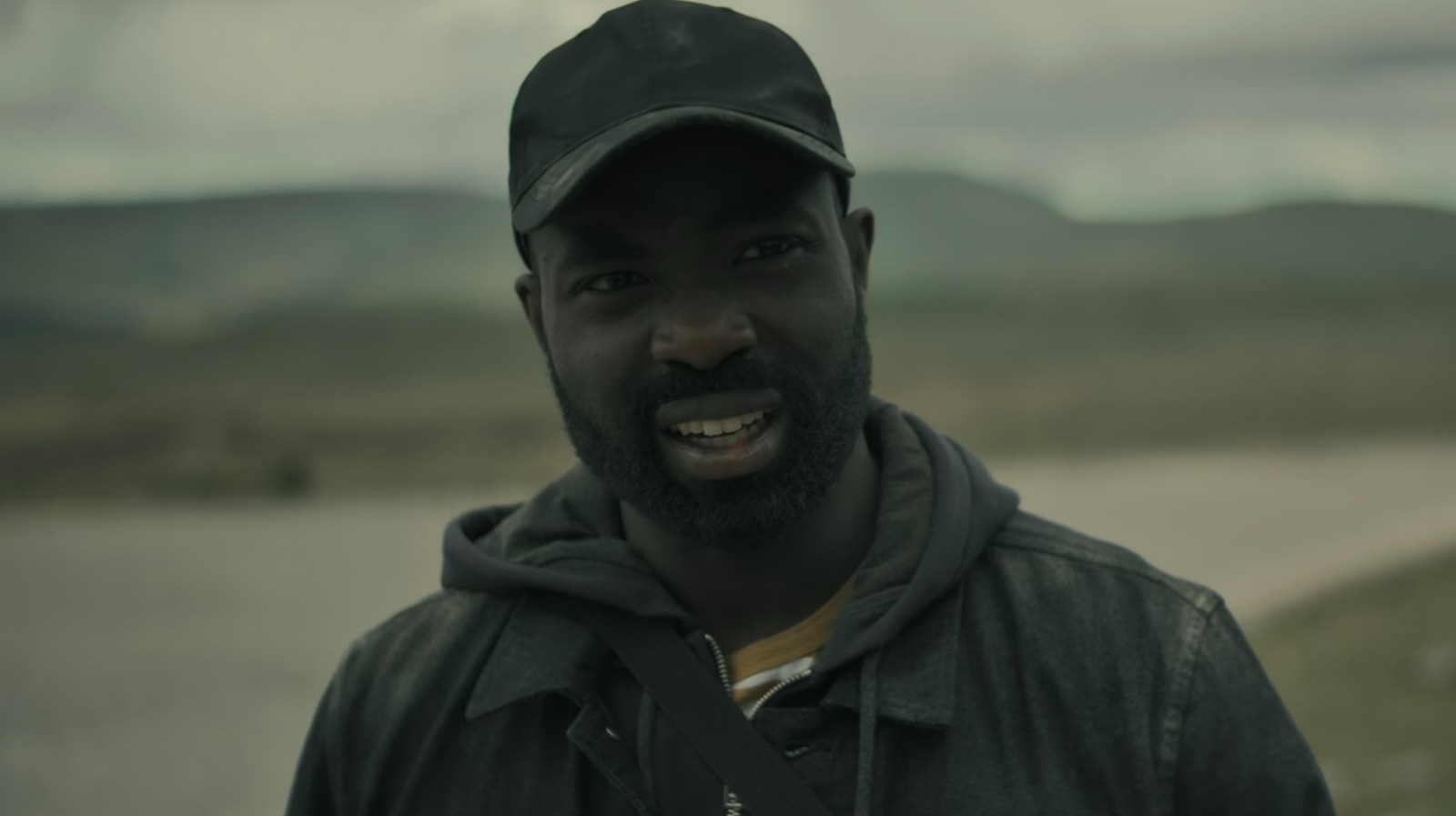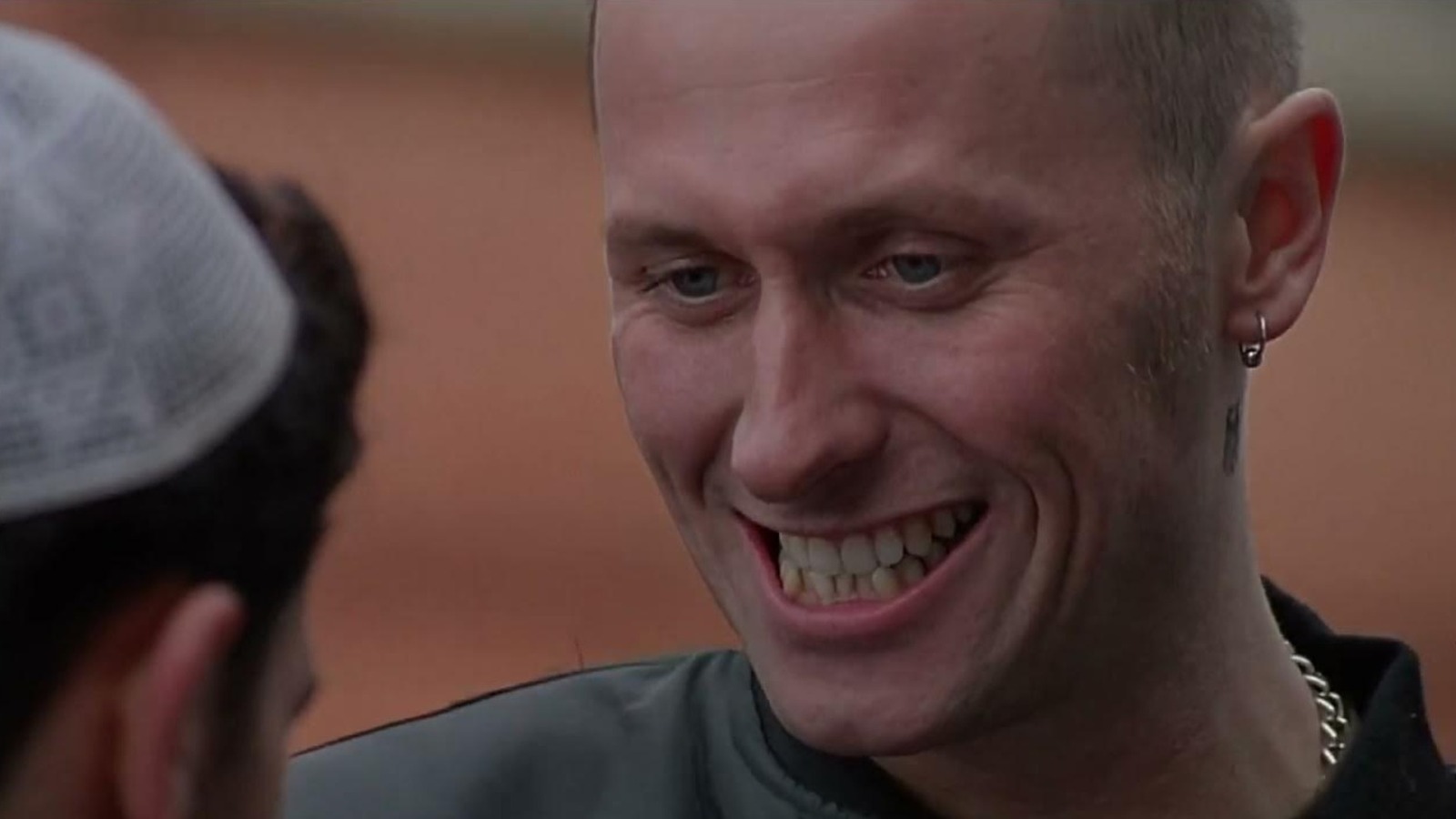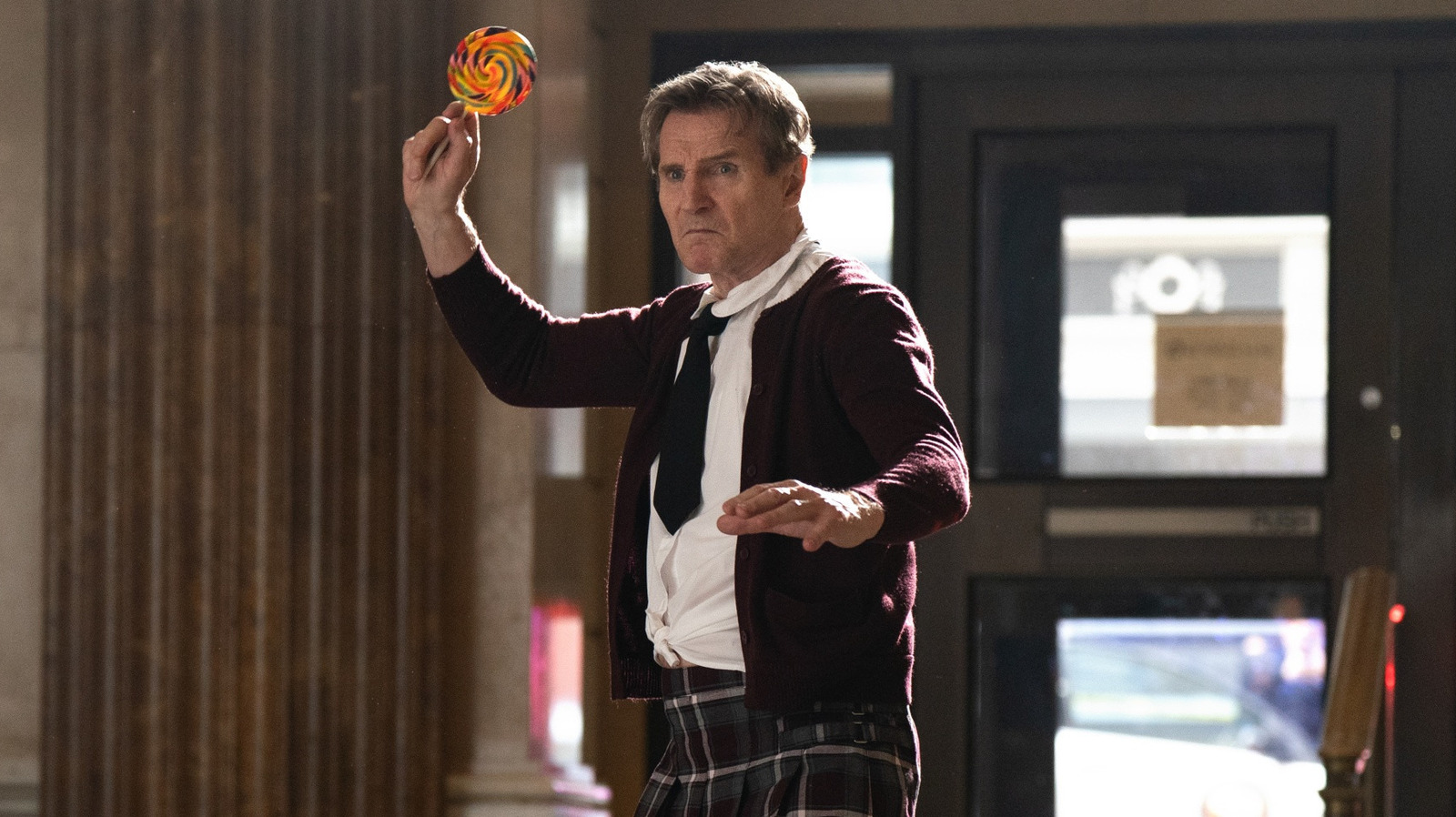
With Hasan in Gaza
Courtesy of Kamal Aljafari Productions

upcoming “Harry Potter” series on HBO Max has a lot it needs to overcome to be seen as more than just a cheap nostalgia play. For starters, it needs to circumnavigate mistakes J.K. Rowling made to the lore with the “Fantastic Beasts” prequels, and the actors need to stand out in the minds of fans compared to the solid performances across the board in the films.
Thankfully, while Alan Rickman’s take on Severus Snape is a highlight throughout the series, there’s reason to be optimistic about what Paapa Essiedu, who was among the first crop of actors announced for the series, could bring to the role. If you don’t believe us, check out a stellar sci-fi series on Netflix, “The Lazarus Project,” to see what Essiedu can do.
Essiedu plays George, a man who wakes up one day to discover himself in a time loop. He possesses a special gene that allows him to be aware of such time leaps, and he’s soon recruited into an organization that aims to avoid apocalyptic scenarios. If one such event occurs, then they reset the timeline to keep civilization going. Despite holding a 100% critical rating on Rotten Tomatoes, “The Lazarus Project” was cancelled after two series.
That’s not stopping it from finding a new audience though. The show originally aired on the British channel Sky Max, but the second series was recently just added to Netflix. It was the sixth most-watched show on the platform for the week ending on July 30. Unfortunately, it does end on a cliffhanger that seemingly won’t get a resolution, unless it can become another show revived after cancellation. Even if it doesn’t, it’s worth watching to see why Essiedu is an exciting actor for Snape.
News of Paapa Essiedu’s casting as the new “Harry Potter” Snape was met with trepidation online. There was, of course, a very vocal chorus pointing out that Essiedu is Black, whereas Alan Rickman was white. There’s also the fact Essiedu is conventionally attractive, which seems to go against Snape’s description in the books where he has sickly skin and greasy hair. However, after watching “The Lazarus Project,” it’ll be clear of what could make Essiedu a great Snape, even if it’s one different from Rickman’s portrayal.
His character, George, is a total lover boy. In the process of saving the world, his girlfriend Sarah (Charly Clive) dies, so he has a massive decision whether to endanger billions of lives for the sake of saving one. Essiedu runs the gamut of emotions upon stumbling onto this sci-fi world, from excited to trepidatious, and his performance can be downright gut-wrenching at times. Essiedu can carry those same feelings with him into Snape, holding onto the memory that the girl he loved most, Lily Potter, was killed, and his duty now is to ensure her son can stop Lord Voldemort.
Before Essiedu landed the gig, many fan castings wanted Adam Driver as Snape, probably because he kind of looks like a young Rickman. There’s no doubt Driver would’ve killed in the part, but honestly, having someone else just riff on what Rickman did would be boring. Essiedu can bring more of that love-lost quality to the character, especially in the earlier seasons before we learn about Snape’s backstory. Though Essiedu may not have been on anyone’s fan casting card, he’s one of the more intriguing picks that could make this whole show worthwhile.


It’s worth remembering that, after HBO’s mushrooming in the 1980s, Time-Warner stepped in to purchase the company in 1989. The influx of studio clout helped the already-large brand become that much larger. Also, HBO began producing their own TV shows as well in the late ’80s, most of them infused with sex, gore, and cussing, things that networks couldn’t do; there’s a reason why multiple episodes of “Tales from the Crypt” featured topless scenes. HBO was also switching to digital broadcast signals, retaining their tradition of sticking with cutting-edge tech to bring their content to viewers.
HBO rebranded their Showcase line as HBO NYC, debuting with the TV movie “Deadly Voyage,” a ship-bound mystery also directed by John Mackenzie. From 1996 to 1999, HBO NYC oversaw all the in-house movies, some high-profile (“Gotti,” “Gia,” “If These Walls Could Talk”), most forgotten. Steven Spielberg’s 1997 prestige picture “Amistad” was co-handled by the NYC brand.
But then HBO NYC folded in 1999 and was re-launched in 2000 as HBO Films. The final film to show under the HBO NYC line was “Witness Protection” starring the late Tom Sizemore. The first HBO Films movie was “Dancing in September,” a film I’m certain you didn’t watch. In 2002, HBO Films had its first great theatrical success with “My Big Fat Greek Wedding,” co-distributed by IFC, and which made over $367 million on a $5 million budget.
Know, then, that HBO constantly launching sub-brands and re-brands is not a recent phenomenon. Of course, these days the company is known for having cycled through HBO Take 2, HBO Family, HBO on Demand, HBO HD, HBO Go, HBO Now, HBO Max, just Max, and then HBO Max again. Of course, growing up in the ’80s, one might remember when HBO was merely a venue to see mid-budget studio fare that wasn’t terribly well-regarded in theaters. A standup comedian once pbserved that “HBO” doesn’t stand for “Home Box Office,” but “Hey! ‘Beastmaster’s’ On!”

Images speak louder than words, they say. A trailer for With Hasan in Gaza from Palestinian filmmaker Kamal Aljafari (A Fidai Film, Recollection, An Unusual Summer), which world premieres in the competition lineup of the 78th edition of the Locarno Film Festival on Aug. 7, abides by that saying.
Below, THR can exclusively reveal the first trailer for the film ahead of the Swiss festival, which runs Aug. 6-16.
“Three MiniDV tapes of life in Gaza from 2001 were recently rediscovered,” reads a synopsis of the movie on the Locarno festival website. “What started as a search for a former prison mate from 1989 led to an unexpected road trip from the north to the south of Gaza with Hasan, a local guide whose fate remains unknown.”
The summary also promises “a cinematic reflection on memory, loss, and the passage of time, capturing a Gaza of the past and lives that may never be found again.”
Aljafari, in a director’s note, describes the film as “an homage to Gaza and its people, to all that was erased and that came back to me in this urgent moment of Palestinian existence, or non-existence.” And he highlights: “It is a film about the catastrophe, and the poetry that resists.”
The movie was produced by the filmmaker through his Kamal Aljafari Productions, with the support of the Doha Film Institute, Cnap – Image/mouvement, the Gwaertler Stiftung, the Columbia Institute for Ideas and Imagination, the Media City Film Festival’s Chrysalis Fellowship, and Atelier 105 – Light Cone.

With Hasan in Gaza
Courtesy of Kamal Aljafari Productions
The trailer for With Hasan in Gaza now provides a first glimpse of some of the images captured on this trip through Gaza, including kids approaching the camera and a drive along the coastline.
“I went to Gaza 24 years ago searching for a friend, without an address,” the filmmaker says. “This is my first film, which I have never made.”
Check out the trailer for With Hasan in Gaza below.
[embedded content]

Mikey Madison, who won this year’s best actress Oscar for her performance in Anora, and Jeremy Allen White, who is elbowing for his third acting Emmy for The Bear come September, are circling the lead roles in Sony’s high-profile sequel to The Social Network.
Aaron Sorkin, who won an Academy Award for penning the 2010 movie, wrote the script and will direct the drama that is inspired by a series of articles Jeff Horwitz wrote for The Wall Street Journal known as The Facebook Files.
Insiders stress that no offers have been made and that the film is still in the development process, although the project is a top priority for the studio and moving fast. Sorkin has been meeting with actors and is packaging a cast and budget, which he will then show to the studio for final approval. Meetings with Madison and White have taken place and the chess pieces are slowly coming together.
While the acclaimed 2010 drama focused on the making of the Facebook, now known as Meta, the story of the new feature will focus on how the company’s own reporting pointed to the negative effects its social media was having on teens and kids, how it knew misinformation was proliferating and causing violence, and how it contributed to the coup attempt of Jan. 6, 2021.
If offers and, indeed, dealmaking closes, Madison would play Frances Haugen, the data engineer-turned-whistleblower who went to the Securities and Exchange Commission and the Wall Street Journal with her information. White would play the former WSJ tech reporter who leads the breaking of the Facebook files.
One source said the project would have shades of The Insider, the 1999 movie from Michael Mann that told of a whistleblower blowing the lid off the tobacco industry by talking to 60 Minutes. Another source said the project has shades of Spotlight, the 2015 movie that centered on reporters from the Boston Globe investigating child sex abuse by the city’s Roman Catholic clergy.
Sony had no comment.

Mikey Madison and Frances Haugen
Brendon Thorne/Getty Images; Peter Rae / Sydney Morning Herald/Getty Images
Sorkin, Todd Black, Peter Rice and Stuart Besser are producing the sequel.
David Fincher directed the original Social Network, which starred Jesse Eisenberg as Facebook founder Mark Zuckerberg, and earned eight Oscar nominations, winning three.
Madison received numerous accolades for her work in Anora, earning multiple nominations and ultimately wins courtesy of the BAFTA Awards and the Academy Awards. Anora won five Oscars, best picture among them. Madison also memorably appeared in Scream (2022) and Once Upon a Time in Hollywood (2019).
She is due to shoot The Masque of the Red Death, a reimagining of the creepy Edgar Allan Poe story from filmmaker Charlie Polinger, in early 2026. The horror project hails from A24, which will distribute worldwide, and Picturestart, which is producing. Earlier this year, she was in talks to star in Star Wars feature Starfighter, but those talks crumbled over financial reasons.
White has earned two Emmy wins for his work on FX’s The Bear and this fall will portray Bruce Springsteen in 20th Century’s true-life Springsteen: Deliver Me From Nowhere, which chronicles the making of his album Nebraska. The drama is due to hit theaters Oct. 24.
Madison is repped by UTA, Authentic Talent and Sloane Offer. White is repped by WME and Entertainment 360.

Topher Grace has joined Cristin Milioti in Buddy, an independent horror thriller from Casper Kelly.
Kelly, who co-created Adult Swim shows such as Your Pretty Face Is Going to Hell and the horror comedy viral sensation Too Many Cooks, is directing the feature and co-wrote it with Jamie King, who previously worked on the Disney+ family movie World’s Best.
Production is currently underway in Ohio.
Plot details are being kept under wraps, but the project is being described as a “new experience in horror.”
J.D. Lifshitz and Raphael Margules are producing via their BoulderLight Pictures, the production company that is having busy year with Companion, Friendship and the upcoming horror movie Weapons on their slate.
Tyler Davidson and Drew Sykes are producing for Low Spark Films, the Cleveland, Ohio, based production company that counts Emily the Criminal and Take Shelter among its credits. The company is co-financing the project.
Range Select and UTA are co-repping the project’s distribution rights.
While Grace became a bold-faced name thanks to his good-natured starring turn in now classic sitcom That ’70s Show, the actor has focused on work to upend that image.
This year alone he co-starred in The Waterfront, Kevin Williamson’s Netflix crime drama in which he played a fun and dangerous drug supplier. He also starred as a fugitive informant trying to survive a deranged Mark Wahlberg in Lionsgate action thriller Flight Risk. Last year, he appeared in A24’s well-regarded and awards-nominated psychological horror movie Heretic. Grace next appears opposite Glen Powell and Margaret Qualley in A24 thriller Huntington.
He is repped by CAA, Brillstein Entertainment Partners and Hirsch Wallerstein.

with the release of “The Naked Gun.” This is a reboot/sequel based on the very popular series of comedies starring Leslie Nielsen from the ’80s and ’90s. This time around, it’s “Taken” star Liam Neeson leading the way as Frank Drebin Jr. as the head of Police Squad. Though he’s known more as an action star over the course of the last 20 years, Neeson now has his sights set on saving theatrical comedy, with the help of a stacked cast and a director with a knack for being very, very funny.
So, do the laughs extend into the credits? Or s it time to make a break for the lobby when the credits roll? Credits scenes have become very common these days and since this is an extension of a once-popular franchise, it’s reasonable to wonder if it includes a post-credits scene or anything of that sort. We’re here to offer up a spoiler-free guide answer to that question. Seriously, there are no spoilers whatsoever here, only an attempt to arm viewers with the knowledge they need. Let’s get into it.
Put simply, yes, “The Naked Gun” does indeed have a post-credits scene. Without getting into the specifics, it does tie back to the movie and those who enjoyed the ride will undoubtedly want to stick around for it. Beyond that, the credits themselves are loaded down with gags that make it worth the wait. There are more laughs to be had so those who have been waiting to take that bathroom break may want to wait just a little bit longer. This is a worth-the-wait situation. Admittedly, not all credits scenes are.
The film is directed by Akiva Schaffer, of “Chip ‘N Dale: Rescue Rangers” and “Popstar: Never Stop Never Stopping” fame. Not to mention his work with The Lonely Island on “Saturday Night Live. Seth MacFarlane (“Ted,” “Family Guy”) is producing the film. MacFarlane had been talking about reviving the series with Neeson in the lead role for several years before it finally came to fruition.
The cast also includes Pamela Anderson (“The Last Showgirl”), Paul Walter Hauser (“I, Tonya”), CCH Pounder (“The Shield”), Kevin Durand (“Abigail”), Cody Rhodes (“Arrow”), Liza Koshy (“Good Burder 2”), Eddie Yu (“The Pitt”), and Danny Huston (“X-Men Origins: Wolverine”). The brief synopsis for the film reads as follows:
Only one man has the particular set of skills…to lead Police Squad and save the world! Lt. Frank Drebin Jr. (Liam Neeson) follows in his father’s footsteps in “The Naked Gun.”
“The Naked Gun” hits theaters on August 1, 2025.